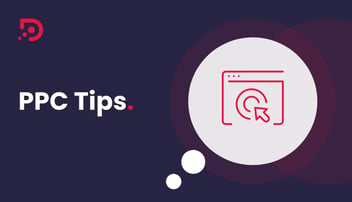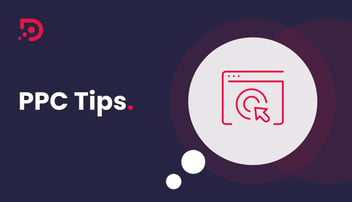Businesses can use Google Ads to promote their products or services, create brand awareness, and increase website traffic. In this article, we provide an overview of how Google Ads work, including the following:
- Types of Google Ads
- Ad Placement
- Ad Auction
- Quality Score
- Ad Rank
Let's dive into the mechanics, features, and strategies behind Google Ads.
Types of Google Ads
- Search Network Ads: These are the most common type of Google Ads. When a user searches for a specific keyword, text ads may appear at the top or bottom of the search results.
- Display Network Ads: These are visual ads that appear on a network of over 2 million websites, videos, and apps that are part of Google's Display Network.
- Video Ads: These ads appear on YouTube and across the Display Network.
- Shopping Ads: Perfect for e-commerce businesses, these display a product’s image, price, and merchant name.
- App Campaigns: These promote mobile apps across Google Search, Play, YouTube, and the Display Network.
How Ad Placement is Determined
The positioning of ads isn't random. Google uses an auction system where advertisers bid on specific keywords or placements. This system considers:
- Bid Amount: The amount you're willing to pay for a click or impression.
- Quality Score: Google rates the relevance and usability of your ad and the quality of your landing page. A higher quality score can lead to lower costs and better ad positions.
- Ad Extensions: These provide additional information and can boost the visibility of your ad.
Combining these factors, Google determines which ads to display and in which order.
Targeting & Personalisation
One of the main advantages of Google Ads is its vast targeting capabilities:
- Keyword Targeting: Advertisers select keywords relevant to their business. When users search for these keywords, the ads may appear.
- Location & Language Targeting: Ads can be shown to users in specific locations or to those speaking certain languages.
- Device Targeting: Advertisers can target specific devices, such as mobile phones, tablets, or desktops.
- Audience Targeting: Target users based on their interests, demographics, or whether they've previously interacted with your business.
What is the Ad Auction?
The ad auction is a system Google uses to determine which ads to display when a user conducts a search, and in which order these ads will appear on the page.
Contrary to common belief, it's not just the highest bidder who gets the top spot. Google aims to show users the most relevant ads, ensuring a good user experience.
How does it work?
- User's Search: It all starts when a user types a query into the search bar.
- Ad Eligibility: Google first weeds out the ads that aren't eligible to be displayed. This could be because the ads target a different country, they've reached their budget cap, or they don't match the user's query.
- Auction Time: Eligible ads then enter the auction. This is not a traditional 'highest bidder wins' kind of auction. Instead, it takes into account both the bid amount and ad quality, among other factors.
The Crucial Factors
- Bid Amount: This is the maximum amount an advertiser is willing to pay for a click on their ad. While this is a crucial factor, it's not the only one.
- Quality Score: This is a metric that Google uses to determine the relevancy and usefulness of your ad to the searcher. It's based on several factors including your ad's click-through rate (CTR), the relevance of your keywords, and the quality of your landing page.
- Ad Extensions and Ad Formats: Using these can influence your ad's rank in the auction. They provide additional information (like phone numbers or site links) and can increase the visibility and performance of your ads.
- The combination of all these factors gives an ad its Ad Rank. The highest Ad Rank gets the top position, the next highest gets the second position, and so on.
What is Quality Score?
The Quality Score is a diagnostic tool provided by Google that offers insights into the health and performance of your Pay-Per-Click (PPC) ads. It's a numerical value between 1 (lowest) and 10 (highest) that indicates how relevant your ads, keywords, and landing pages are to a user viewing your ad. Think of it as a measure of your ad's overall quality and relevance to searchers.
Components of Quality Score
Quality Score is derived from three core components:
- Expected Click-Through Rate (CTR): This is an estimate of how likely it is that your ad will get clicked when shown for its target keyword.
- Ad Relevance: This assesses how closely your ad matches the intent behind a user's search query.
- Landing Page Experience: Google evaluates the quality and relevance of your landing page. It looks at factors like content originality, ease of navigation, and load time.
Why is Quality Score Important?
Understanding and optimising for Quality Score is essential for several reasons:
- Cost Efficiency: A higher Quality Score often correlates with a lower cost-per-click (CPC) for your ads. This means you're getting more value for your advertising spend.
- Ad Placement: Google uses Quality Score, in conjunction with your bid amount, to determine your ad rank in the auction process. A higher Quality Score can result in better ad positions.
- Competitive Edge: Even if your competitors bid more than you if your ads have a higher Quality Score, they can potentially appear above theirs in search results.
What is Ad Rank?
Ad Rank is a value used by Google to determine the position of your ad on the search results page. In simpler terms, it decides where your ad will appear in relation to other ads. For instance, will your ad be the first one users see, or will it be further down the page?
How is Ad Rank Calculated?
According to Google, Ad Rank is calculated “using your bid amount, your auction-time ad quality (including expected click-through rate, ad relevance and landing page experience), the Ad Rank thresholds, the competitiveness of an auction, the context of the person’s search (for example, the person’s location, device, time of search, the nature of the search terms, the other ads and search results that show on the page and other user signals and attributes) and the expected impact of assets and other ad formats.”
Ad Rank is recalculated each time that your ad is eligible to appear and competes in an auction, so your ad position can fluctuate each time depending on your competition, the context of the person's search and your quality at that moment.
Why is Ad Rank Important?
Understanding and optimising for Ad Rank is crucial for several reasons:
- Visibility: A higher Ad Rank means your ad is more likely to be seen by users.
- Cost: A better Ad Rank can actually lower the amount you pay per click. If Google deems your ad to be highly relevant and useful, you might end up paying less than a competitor bidding more than you.
- Return on Investment (ROI): By focusing on improving the factors that influence Ad Rank, you can drive more qualified traffic to your site at a lower cost.
Tips to Improve Your Google Ads
If you're keen to enhance your Quality Score & Ad Rank, consider the following tips:
- Keyword Relevance: Ensure your keywords are tightly themed and relevant to the ad group they're in. This can increase the relevance of your ads to user queries.
- High-Quality Ad Copy: Craft compelling and relevant ad copy that resonates with your target audience and matches their search intent.
- Optimise Landing Pages: Your landing page should deliver what's promised in the ad. It should be user-friendly, relevant to the ad, and load quickly.
- Negative Keywords: Regularly update your negative keywords to prevent your ads from showing for irrelevant queries.
- Adjust Your Bids: Consider increasing your bid amount for keywords that are particularly valuable to you.
- Use Ad Extensions: They can make your ad more useful and increase its visibility.
Optimising for Google Ads is a blend of art and science. It requires a deep understanding of your target audience, their behaviours, and their needs.
When done correctly, it can be the driving force behind a successful Google Ads campaign, funnelling interested users right to your doorstep.
Remember, it's about quality, not just quantity. Embrace the journey of discovery, refinement, and optimisation, and let the power of Google Ads amplify your advertising efforts.
Learn everything you need to know about Google Ads for B2B Marketing with our content hub.



